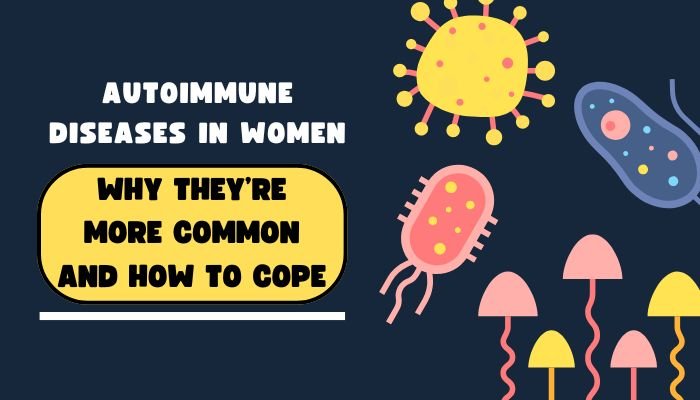Introduction
For decades, women have shouldered most of the contraceptive responsibility, with pills, patches, rings, and other hormonal methods widely available. Meanwhile, men’s non-permanent birth control options have been largely limited to condoms or withdrawal—less effective than many female-controlled methods—or vasectomy, which is permanent.
Researchers have long aimed to create a “male pill” that reliably and safely prevents sperm production or function. But while headlines about breakthroughs appear regularly, there is still no commercially available male contraceptive pill on the market.
This article examines the scientific and regulatory steps toward a potential male pill, including current research paths, trial challenges, and the evolving outlook for male contraceptive development. As more men express willingness to share contraceptive responsibility, the question becomes: “How close are we to a real male birth control pill?” Let’s review the latest efforts and what’s needed for a widely accessible option.
Why Develop a Male Birth Control Pill?
Bridging the Contraceptive Gap
Women currently have numerous and varied birth control methods—both short- and long-term. By contrast, men beyond condoms or vasectomy have fewer on-demand or reversible solutions. A safe, effective male pill would:
- Shift Contraceptive Burden: Ease the load on female partners.
- Improve Overall Choice: Provide couples with more flexible shared responsibility.
- Enhance Relationship Dynamics: Some men want better control over their own fertility, while partners appreciate the added option.
Addressing Unintended Pregnancies
Even with widely available female methods, unintended pregnancies remain frequent, partly due to inconsistent or incorrect use. A male pill could reduce reliance on a single partner to manage contraception, potentially lowering overall rates of unintended pregnancy.
The Science Behind Male Hormonal Contraception
Basic Concept
Similar to female hormonal birth control, a male contraceptive would suppress or drastically reduce sperm production (spermatogenesis) by altering the hormone balance that regulates the testes. Typically, the hypothalamus releases GnRH, prompting the pituitary to secrete FSH and LH, which stimulate testosterone production and sperm generation in the testes.
- Testosterone + Progestin Combination: The standard approach in many trials is to give extra testosterone along with a progestin. This combination, paradoxically, signals the body to cut back its own testosterone production in the testes, thus lowering sperm counts.
- Goal: Sperm counts drop to near or below the threshold needed to prevent fertilization. Once you stop the pill, normal hormone production and sperm counts recover over time.
Challenges and Side Effects
Obtaining adequate suppression of sperm without undesirable side effects is tricky:
- Mood Changes, Acne, Weight Gain: Mirroring issues that some women experience with hormonal contraception.
- Libido Changes: Ensuring sexual function remains intact can be delicate.
- Dose and Delivery: Oral hormones can have a shorter half-life, requiring consistent daily intake. Some research focuses on gels or injectables to bypass frequent peaks and troughs.
While some men accept mild side effects, ensuring a good safety margin for a large, healthy population is necessary for regulatory approval.
Non-Hormonal Approaches for Male Contraception
Targeting Sperm Function
Not all researchers pursue hormonal suppression. Some explore compounds that directly inhibit sperm motility or fertilizing ability:
- Sperm-Specific Proteins or Enzymes: Blocking critical steps in sperm’s ability to swim or fuse with the egg.
- EPPIN-Targeting Drugs: EPPIN is a protein on sperm surface; interfering with it may hamper sperm function.
- Retinoic Acid Pathway Inhibitors: Retinoic acid is crucial for spermatogenesis; blocking it might temporarily halt sperm production.
These efforts might dodge systemic hormonal changes. However, it can be hard to ensure high efficacy in sperm disruption without causing permanent damage or broader physiological impacts.
Vas-Occlusive Devices and Gels
Though not a pill, an alternate concept is injecting a polymer gel into the vas deferens to block sperm flow. This approach—sometimes reversible—could function similarly to a vasectomy but with potential for removal if the user wants to restore fertility.
Current Status of Clinical Trials
Hormonal Pills and Gels
A variety of Phase II and Phase III trials have tested daily pills or transdermal gels:
- Nestorone/Testosterone Gel: A combination tested in multiple countries to confirm effectiveness in reducing sperm counts to below 1 million/mL (sufficient for contraception). Studies also track side effects (e.g., mood, sexual function).
- DMAU (Dimethandrolone Undecanoate): An oral agent that combines androgenic and progestogenic properties. Early-phase studies show promising suppression of sperm, though trials are ongoing to confirm long-term safety and efficacy.
Non-Hormonal Molecules
Efforts like the Eppin study or retinoic acid inhibitors are in preclinical or early human studies. They face challenges in balancing full fertility suppression, minimal toxicity, and reversibility.
Potential Timeline
Even if a candidate shows promise, finalizing a drug for public sale can take years. Regulatory agencies demand robust safety data—particularly for healthy men taking a medication purely for contraception. Achieving a commercial “male pill” typically involves:
- Phase I–III Trials: Confirming efficacy, short- and long-term side effects.
- Regulatory Approval: Possibly requiring multi-year follow-ups to confirm reversibility.
- Manufacturing and Distribution: Sufficient supply chain to meet potential global demand..
Key Hurdles to Market Availability
Safety Thresholds and Liability
Contraceptive users are generally healthy, so tolerating side effects is lower compared to medications treating life-threatening conditions. A pill that caused mood disturbances, slight metabolic changes, or other side effects might be deemed unacceptable by many men or by regulatory bodies.
Cultural and Behavioral Factors
Many men might be hesitant to try a new contraceptive with unknown long-term effects on fertility or sexual function. Additionally, women’s trust in a partner’s pill adherence can shape demand for these methods—just as men sometimes question correct pill usage in female partners.
Economics and Pharma Investment
Drug companies weigh research costs, potential litigation concerns, and uncertain consumer uptake. Historically, many have withdrawn from male contraceptive research, slowing progress. However, smaller biotech firms and public-funded projects carry on.
Interim Alternatives for Men
Condoms and Withdrawal
While not new or highly advanced, these are widely accessible non-permanent solutions:
- Pros: Over-the-counter availability, no long-term side effects, some STI protection with condoms.
- Cons: Less effective in typical use, overshadowing them in reliability compared to female methods.
Vasectomy
A permanent approach with high success rates. It involves cutting or sealing the vas deferens:
- Pros: Simple outpatient procedure, extremely effective, minimal downtime.
- Cons: Intended to be permanent, reversal can be expensive and not guaranteed successful.
Contraceptive Gel Injections (Vasalgel, RISUG)
Non-hormonal gel injections into the vas deferens remain under clinical investigation in some regions. They could block sperm flow with potential reversibility, though no large-scale commercial product is yet available globally.
Preparing for a Future Male Pill
Men’s Role in Contraceptive Responsibility
With potential solutions on the horizon:
- Shared Decision-Making: Couples can openly discuss their birth control preferences, dividing responsibility.
- Education and Comfort: Understanding how these pills function, potential side effects, and reversibility is crucial to acceptance.
- Advocacy: Interest from men and willingness to participate in trials can accelerate development.
Reversibility and Family Planning
Because many men plan to have biological children later, ensuring a male pill’s fertility suppression is fully reversible is paramount. Trials often confirm that after discontinuation, sperm counts return to normal within months, but more extensive, long-term data is needed for mass acceptance.
Safety Monitoring
As with any new medication, post-marketing surveillance and observational studies would track real-world side effects once a product is approved. Clear labeling, routine checkups, or hormone level tests could become standard guidelines.
Conclusion
The concept of a male birth control pill has progressed from science fiction to serious scientific pursuit. Hormonal and non-hormonal strategies are under active investigation, with certain candidates showing promise in lowering sperm counts to contraceptive levels. Despite challenges—such as achieving safety standards, ensuring reversible fertility, and navigating cultural acceptance—several lines of research continue to push forward.
While a commercially available male pill likely remains a few years away, men who wish to share contraceptive duties more equitably may soon see an expanded menu of options. In the meantime, tried-and-tested methods, including condoms and vasectomy, remain men’s main staples. If successful, a safe and effective male pill could revolutionize family planning, offering couples a new layer of choice and collaboration in preventing unintended pregnancy.
References
- Nieschlag E. The struggle for male hormonal contraception. Best Pract Res Clin Endocrinol Metab. 2021;35(3):101505.
- Page ST, et al. Contraceptive efficacy of a novel androgen + progestin combination in men. J Clin Endocrinol Metab. 2020;105(11):3615–3624.
- Anawalt BD. Approach to the male contraceptive revolution. Endocrinol Metab Clin North Am. 2021;50(3):615–629.
- Colvard DS, Nieschlag E. Androgen/progestin combination for male contraception: from hope to reality. Andrology. 2017;5(2):229–236.
- Thirumalai A, Amory JK. Clinical trial updates for male hormonal contraception. Curr Opin Endocrinol Diabetes Obes. 2023;30(3):224–230.
- Ilani N, Liu PY, Swerdloff RS, et al. Male hormonal contraception: pressing forward. Trends Endocrinol Metab. 2020;31(6):401–413.
- Sitruk-Ware R, Nath A, Mishell DR Jr. Contraception technology: past, present and future. Contraception. 2013;87(3):319–330.
- Sundaram A, Vaughan B, Kavanaugh ML. Contraceptive preferences among men: insights into male methods. Contraception X. 2023;X(2):100061.
- Wang C, Lobo RA, LaVoie HA, et al. Innovations in male contraception. Nat Rev Endocrinol. 2025;14(5):272–287.
- Yanagimachi R, Chang MC. Fertilization of hamster eggs in vitro with spermatozoa capacitated in vivo. J Exp Zool. 1963;154(3):333–341.
- Amory JK, Anawalt BD. The future of male contraception: a battery of tests or a single bullet? J Clin Endocrinol Metab. 2025;110(2):430–438.
- WHO Task Force on Methods for the Regulation of Male Fertility. Contraceptive efficacy of testosterone-induced azoospermia and severe oligozoospermia. Lancet. 1996;347(9014):794–798.







